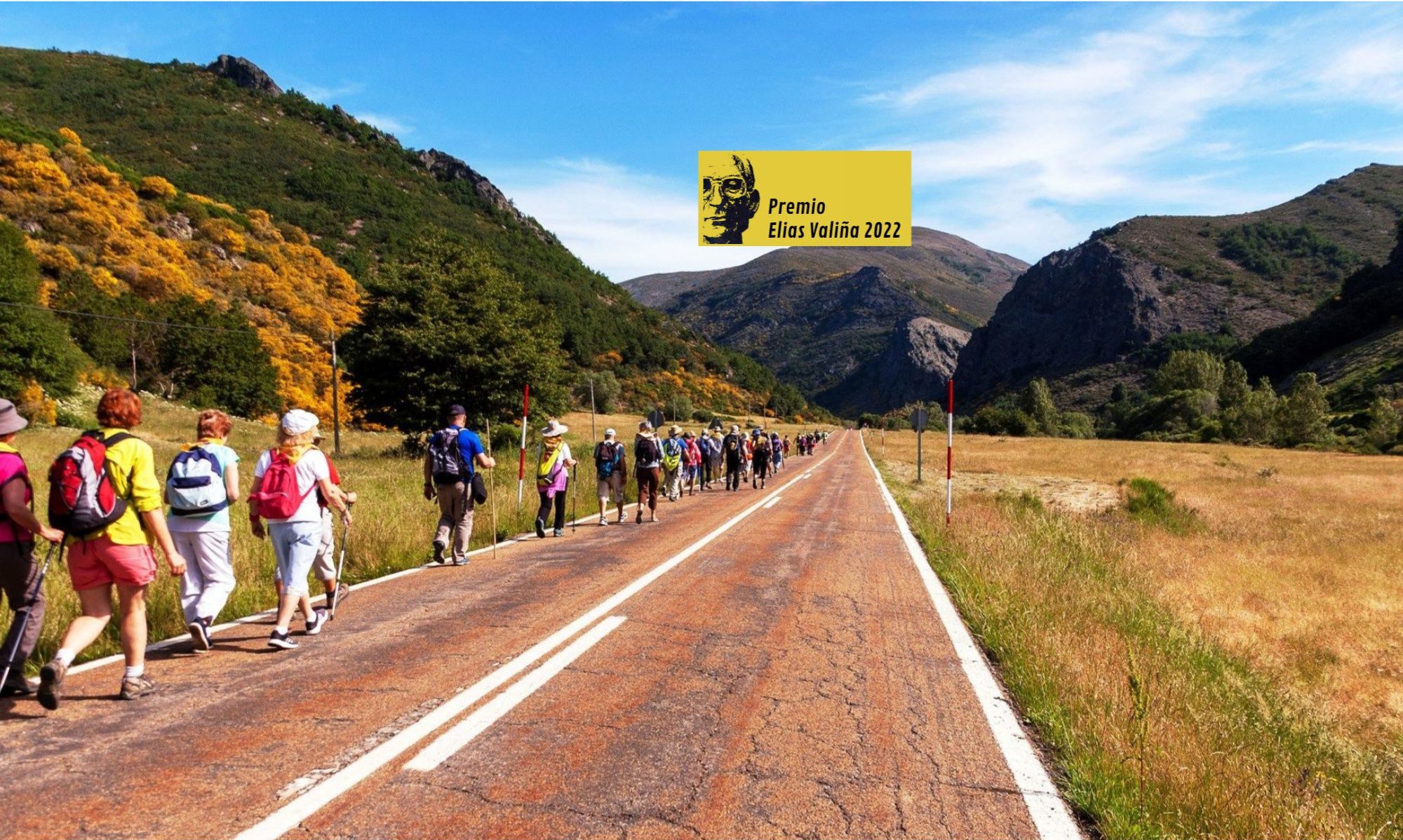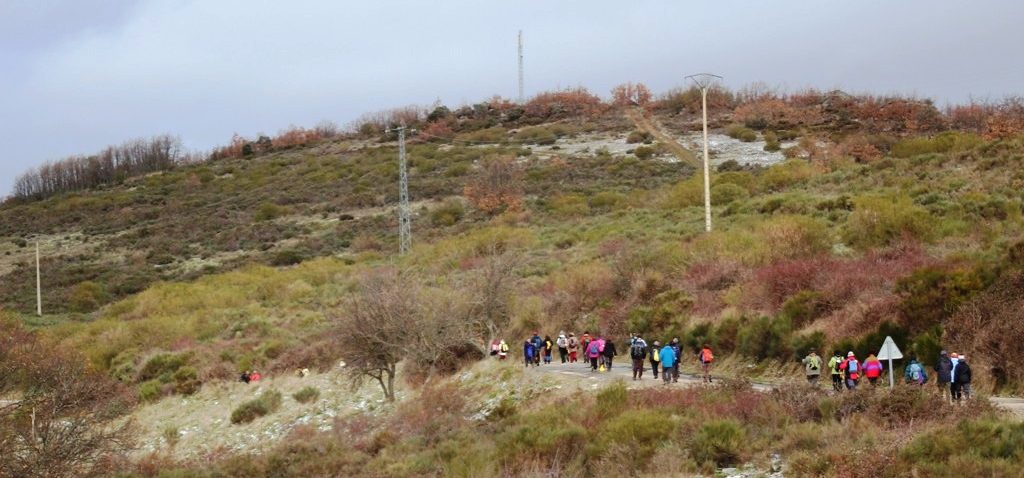In this day and age, distances are mainly internal, as we can communicate with any place on the planet in just a few seconds thanks to new technologies. For this reason, making the pilgrimage to Santiago de Compostela is an almost epic effort.
With all the constraints of our times, there are people who may simply want to have a break to reflect and fulfil themselves inwardly with this experience. Others, on the other hand, make the pilgrimage for strictly religious reasons, for a promise, to give thanks… Or they simply walk for a cultural or recreational reason.
And here you are. If you have decided to do the Camino, we advise you to walk and “grow” with it. Take advantage of the occasion and keep your mind, eyes, and ears wide open and ready. Respect yourself and respect the other walkers. Talk to them, admire the landscape, get to know its people, and enjoy St. James’s culture. That is how you will discover the other Camino.
The Camino de Santiago can be, and indeed is, an inner experience. A personal experience. And for that reason, each of us will see a different path and make a different path, even if we follow the same “yellow arrows” and walk the same road.
Whether you do it for religious, cultural, academic or any other reason, always remember what it says inside your credential: “Doing the Camino de Santiago is a personal commitment […]. The pilgrim cannot demand anything because of his or her own condition but rather be grateful for the help received. […] Respect and comply with the rules of each albergue and heed the instructions of the hospitaleros. Keep the albergues where you spend the night clean and take care of their facilities. Respect other pilgrims’ rest”. Comply, therefore, with all the rules that are imposed in the albergues by the hospitaleros, especially with the hours of rest and silence, and respect other walkers. And walk… Slowly but surely.
When it comes to walking, or pedalling, each of us has a “pace” or a suitable walking speed. That is why you should walk at your own pace. Do not speed up or slow down to wait or catch up continuously with another pilgrim, companion or friend, because “forced walking” (by speed or slowness) can cause you significant discomfort, fatigue or even injury to muscles or tendons. We will probably see each other throughout the mornings, certainly every afternoon in the albergues.
Be in good spirits, take a guidebook – or mobile app, as we are well into the 21st century – and be patient. For the rest, you just need to follow the yellow arrows to Santiago.
*The above text is, for the most part, a small guide by Professor Yebra Prada for his students, but it is undoubtedly useful for anyone who wants to approach the Camino for the first time.
BUEN CAMINO!
ADVICE
From a pilgrim to another pilgrim…
Anyone can do the pilgrimage on foot, athlete or not, as long as they know how to adapt the effort to their physical condition. In any case, you are advised to prepare for a week, walking with the footwear you are going to use and even carrying some weight in your backpack.
To make things easier for you, take note of the recommendations below. Everyone has their own strengths and previous experiences, but as we have been pilgrims ourselves, we offer you our advice, hoping that it will be useful to you. It goes without saying that you can also share yours with us to improve the preparation of future pilgrims.
THE BACKPACK:
Did you know that it is highly recommended to carry a weight of approximately one tenth of your body, with a maximum of about 9 kilos? Are you aware that you will have to leave behind many items that seem essential in our daily life?
Don’t be discouraged! First, choose what you are going to take with you, then -if you are overweight- reselect. Take everything in a backpack and a belt bag, neatly arranged in plastic bags. The heaviest stuff, underneath and close to your back.
The best rucksack is one that can be worn close to the body, with chest and waist straps, sothat it does not sway. Also, avoid carrying things “hanging”, such as a sleeping bag. Ideally, everything should be securely fastened.
DOCUMENTS:
Your ID card or passport, health card or medical insurance, and the Pilgrim’s Credential, which you can get from the Camino Associations and in the main Albergues. In addition, a credit card (cash is only necessary for two or three days, never for the whole Camino).
The León Association provides you with the credentials at our headquarters on the spot, after filling in a brief application form. We also give you an orographic profile and information about the distances and services available in all the places along the Camino from León to Santiago. Remember our opening hours: Monday to Friday, from 11.00 to 13.00 in the morning, and from 18.00 to 20.00 in the afternoon.
If you cannot come during these hours, do not hesitate to call or contact us by email, and we will offer you more options.
THE SLEEPING BAG
This is essential if you plan to stay in Albergues. Compact sleeping bags are more suitable. If you do the Camino in summer, and especially the French Way, consider also taking a mat to avoid direct contact with the ground in case there are no free beds in the Albergues. Fortunately, there is an ever-increasing number of Albergues and hostels, and they are better equipped, but this situation may still arise.
CLOTHING:
Not much, two or three sets of each garment, 3 pairs of socks (make sure they don’t become wrinkled when you put them on), a jumper and a rain jacket or poncho, which can also cover your backpack in case of rain. A cap/hat, gloves, a swimming costume… depending on the time of year.
SHOES:
Another essential item. Trainers or boots that are not new and that you feel comfortable in. Nowadays there are a multitude of trekking models, but in any case, a good pair that fits you well and that you have worn before. Ideally, it should be a boot made of light, breathable fabric, which protects your ankles from sprains and makes it easier to walk over rocks and mud.
For the Albergue and in the evening, sandals or flip-flops in summer, as they can be worn in the shower and keep your feet dry and well aired afterwards. For the rest of the year, other comfortable trainers can be used.
MISCELLANEOUS:
Always carry some food with you, especially nuts, fruit or chocolate, and a full water bottle.
You can carry a small first aid kit: aspirin, Vaseline or similar (for your feet, before putting on your socks in the morning), moisturising cream (for your feet, in the afternoon after washing and drying them), sun cream (spring and summer), plasters, … but bear in mind that there are also pharmacies and doctors along the Camino, and that they know well the usual ailments of pilgrims. Seek their help rather than putting yourself at risk with remedies from friends.
PRACTICAL ITEMS:
The most essential: A towel (nowadays, microfibre fabrics are the most suitable because of their small size, light weight, great absorption and easy washing and drying), a small bottle of soap and shampoo, a hat or cap, a small bottle of water or flask to refill at drinking fountains, a cutlery set, a cup, a toilet bag, a small notebook, something to write with, a pillowcase, a guidebook of the Camino, a phone card or mobile phone with its charger and, of course, lots of courage and good humour.
Other practical items (if desired): a laundry soap (1/2 bar is sufficient), mosquito repellent cream, a disinfectant, gauze, a needle and thread, a small book to reflect on, nail clippers, a torch, a walking stick and clothes pegs.
AND LET’S GO!
Although in the first few days it is common to have doubts and fears, which can make you feel discouraged… because Santiago is far away… you must always bear in mind that you make the path by walking. Being aware of your personal limitations, together with a good adaptation during the first week, will clear up all this initial anxiety.
Try to walk few kilometres at the beginning (not more than 15 – 20 km); from the fifth or sixth day you can do stages of more kilometres, although we do not recommend walking over 25 – 30 km per day. Doing this, you will avoid overexertion and injuries while being able to rest and enjoy the Camino.
There is no doubt that the worst obstacle for pilgrims are their own fears and doubts. But we are here to help you, and once you take the first step, the next one will surely be much easier.
Ultreia!

